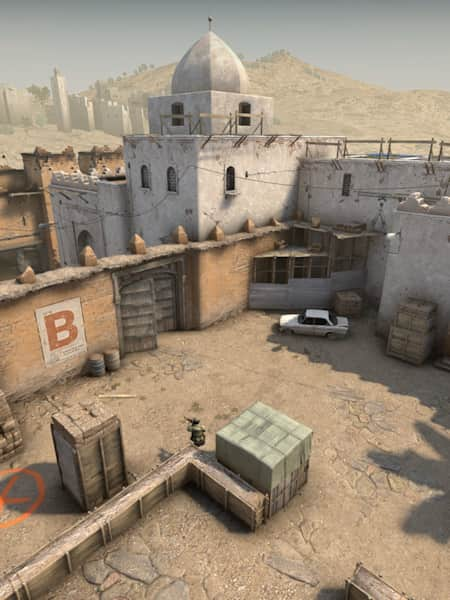Bodrum Escapes: Your Guide to Luxury and Leisure
Explore the best of Bodrum with exclusive insights and tips for an unforgettable experience.
Mapception: Exploring the Layers of CSGO's Most Complex Maps
Unlock the secrets of CSGO's most intricate maps in Mapception! Dive deep into layers, strategies, and hidden gems that elevate your gameplay.
Understanding the Verticality: How Height Changes Gameplay in CSGO Maps
In the world of CSGO, verticality plays a crucial role in shaping gameplay dynamics on various maps. Understanding how height differences impact player strategies and map control is essential for players looking to improve their skills. Vertical elements, like elevated platforms, tunnels, and bridges, create opportunities for surprise attacks and enhanced visibility. For instance, players holding high ground can easily scout enemy movements and secure advantageous positions during firefights. This vertical stratification not only affects combat scenarios but can also change the flow of the game by controlling crucial chokepoints and objectives.
Furthermore, different maps in CSGO utilize verticality in unique ways, influencing team tactics and playstyles. On maps like Vertigo, the multiple levels and height access points allow for a diverse array of engagements, forcing teams to adapt their approach to both offense and defense. Players must learn to navigate these vertical spaces effectively, utilizing grenades and utility to flush opponents out from their vantage points. As players become more aware of the significance of height, they can develop strategies that exploit verticality, leading to more effective gameplay and improved overall performance in CSGO.

Counter-Strike is a popular first-person shooter game that has gained immense popularity in the esports scene. Players can choose between two teams, Terrorists and Counter-Terrorists, each with specific objectives to complete. Many players strive to optimize their gameplay, often looking for professional player configurations, such as s1mple settings, to enhance their performance in the game.
Top 5 CSGO Maps with Hidden Layers and Secrets
Counter-Strike: Global Offensive (CS:GO) is well-known not just for its competitive gameplay, but also for the intricate designs of its maps. Among them, a few stand out for their hidden layers and secrets that can significantly influence the outcome of matches. The first on our list is Dust II, a classic map that has remained relevant over the years. Beyond its iconic mid-control, Dust II harbors several lesser-known spots and paths that players can exploit. For instance, the area behind the A site bomb site offers sneaky angles and tactical advantages that can catch opponents off guard.
Another notable map is Train, where players can discover various vertical layers that provide unique opportunities for ambushes and escapes. Notably, the upper and lower trains allow for variation in gameplay, but hidden spots in the bomb sites can turn the tide of a match if utilized correctly. Additionally, Inferno, with its intricate alleys and hidden nooks, offers secrets that can lead to surprise plays. Learning these hidden layers not only enhances gameplay but also enriches the overall experience in CS:GO. For those looking to master these maps, understanding these hidden elements is crucial.
How to Master CSGO's Most Complex Maps: Tips and Strategies
Mastering CSGO's most complex maps requires a combination of strategy, communication, and practice. A good starting point is to familiarize yourself with the layout of each map. Take the time to study the callouts and key locations; this allows your team to communicate effectively during matches. Use a map guide or watch professional players navigate the maps to understand optimal routes and positioning. Additionally, practicing your movement and control in these intricate environments can significantly boost your gameplay.
Another crucial aspect is to develop a repertoire of strategies tailored to each map. Working with your team to create unique tactics can give you a competitive edge. Consider using the following tips:
- Analyze the enemy's play style to adjust your strategy accordingly.
- Utilize smoke grenades and flashbangs to control visibility and disrupt enemy plans.
- Control key areas and choke points to dominate the map.
Regular practice and executing these tactics will help you gain confidence and improve your rankings in CSGO matches.